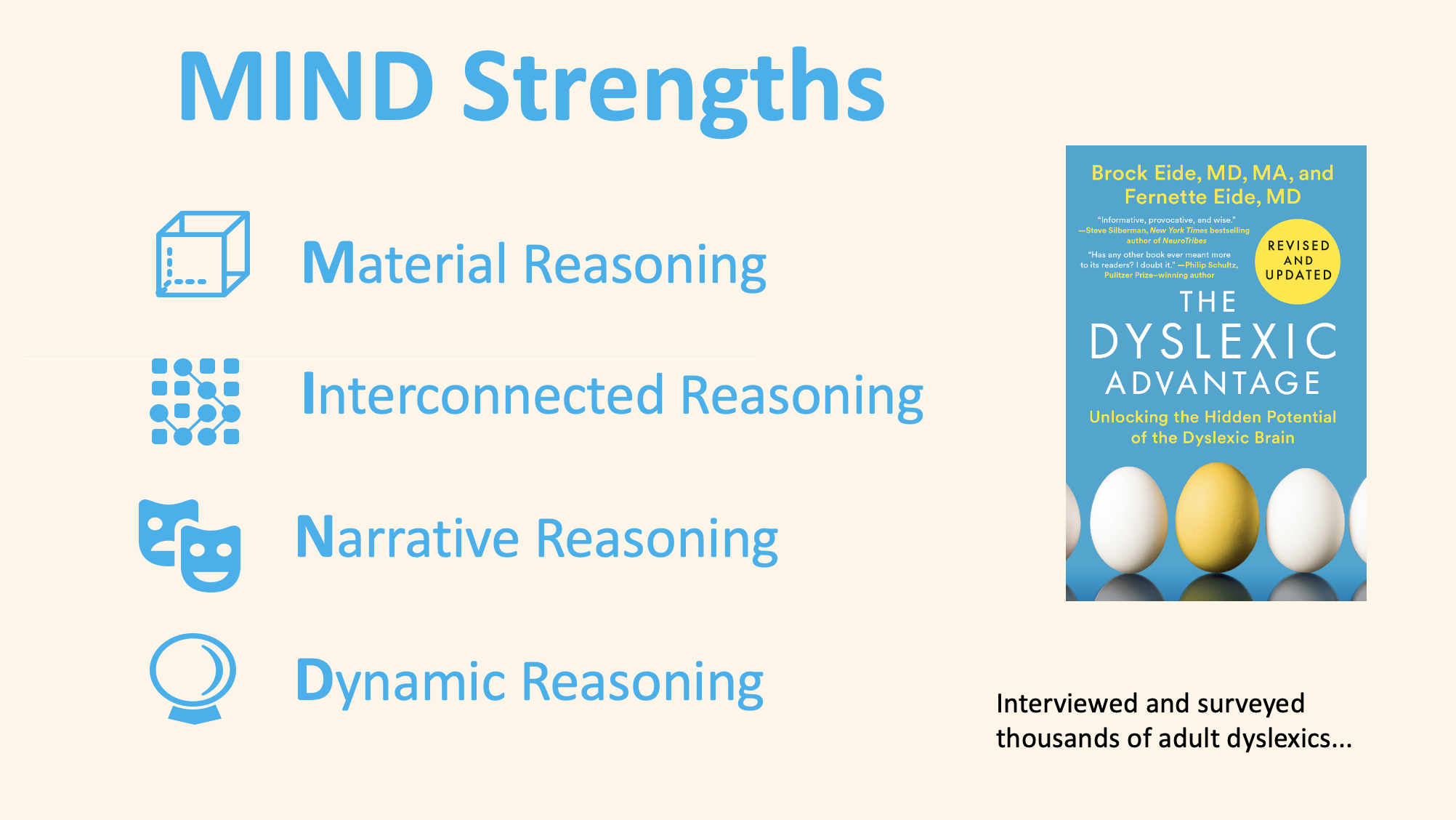In our book, The Dyslexic Advantage, we spoke about 4 groups of strengths that we saw in many dyslexic people. The acronym MIND stands for Material Reasoning, Interconnected Reasoning, Narrative Reasoning, and Dynamic Reasoning.
Material Reasoning is the ability to reason about the physical characteristics of objects and the material universe (largely 3D spatial reasoning).
People with high M-strengths may work in careers such as art and engineering, architecture, landscaping, filmmaking, aeronautics, surgery, mechanics, and industrial design.
Interconnected Reasoning is the ability to spot connections or relationships (e.g., similarity, causality, or correlation), the ability to connect diverse perspectives or see things from other points of view (e.g., interdisciplinary thinking, empathy), the ability to unite bits of information into a single “big picture”, or to spot the “forest in the trees” (e.g., gist and context). High I-strengths careers include jobs like science, computer software design, museum curators, coaches and trainers, actors, dancers, and choreographers.
Narrative Reasoning is the ability to construct a connected series of mental scenes from past personal experiences, to recall the past, understand the present, or create imaginary scenes. High N-strengths careers include novelists, journalists, screenwriters, filmmakers, counselors, ministers, coaches, teachers, attorneys, marketers, and public relations professionals.
Dynamic Reasoning is the ability to recombine elements of the past to predict or simulate the future or reconstruct the unwitnessed past. High D-strength careers include entrepreneurs, venture capitalists, finance, business consulting and strategists, logisticians, economists, farmers, and ranchers.


